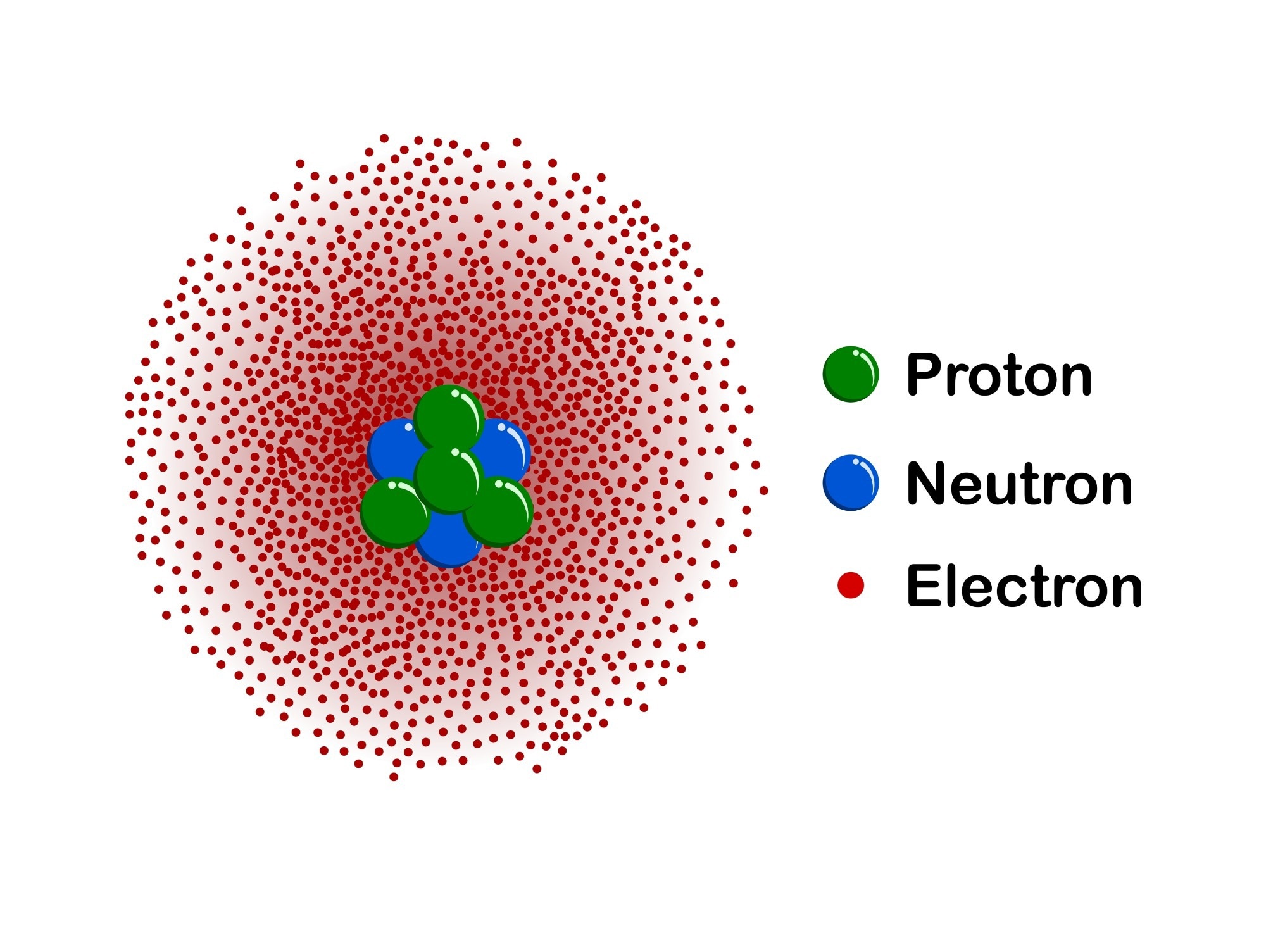Quantum mechanical modeling (QMM) is a step beyond classical computing that exploits quantum phenomena such as superposition and entanglement. Most quantum mechanical models are mathematical or algorithmic and based on quantum operations and circuits. While quantum mechanics is still evolving, QMM has significantly impacted nanoscience and materials science.1

Image Credit: KRPD/Shutterstock.com
Despite several advances in nanotechnology, research at the molecular level is still challenging. Complex nanocomposites with fundamentally new properties and enhanced functionality can be optimized rapidly with QMM.2 However, like other scientific developments, QMM faces challenges and requires further research to realize its full potential.1
This article explores the fundamentals of QMM, its application in nanoscience, and existing challenges.
Fundamentals of QMM
Classical computations rely on binary bits, which can be in either of the two states, 0 or 1. In contrast, quantum computing is based on qubits, which can be 0, 1, or a superposition or entanglement of these states. The concept of qubits led to the emergence of quantum technologies such as QMM, which is based on quantum phenomena like superposition and entanglement of quantum states.1
Quantum mechanics uses the Schrödinger equation to describe an atom’s dynamics in a system. Thus, QMM involves solving the Schrödinger equation to determine a nanomaterial’s atomic and electronic structure. The numerous variables involved limit exact solutions, necessitating additional first-principle methods to address increasing complexity and dimensionality.2
QMM uses theoretical models based on certain approximations to study the properties of complex molecular systems. For example, the Born-Oppenheimer approximation assumes the partitioning of variables into massive nuclei and fast electrons.
Alternatively, the Hartree-Fock approximation transforms the multi-electron wave function of the Schrödinger equations into a correlation relation of one-electron functions. Such assumptions reduce the complexity and dimensionality of problems by decreasing the investigated objects’ degrees of freedom.2
Density functional theory (DFT), introduced by Hohenberg and Kohn in 1964, is a basic QMM methodology that calculates the electron density of molecules to predict their properties. A part of electron correlation energy is determined from the exact solution obtained from the Schrödinger equation.2
Overall, DFT is an accurate and cost-effective reformulation of quantum theory; however, the exchange-correlation energy function requires certain approximations, such as local density approximation, Kohn-Sham formalism, and generalized/meta-generalized approximations.2,3
Similar to their classical counterparts, QMM models are categorized as mathematical (unitary operators), machine (quantum Turing machine), circuit (quantum gates), and algorithmic (quantum programming languages). While circuit models are used to design standard quantum processors and quantum chips, quantum neural algorithms are being explored for machine learning developments.
Other common QMM models include error models for linear optics quantum computing and lattice-spin models for polar molecules stored in optical lattices.1
Applications of QMM in Nanoscience
QMM has emerged as a powerful tool for studying the behavior and properties of nanosystems. First-principle calculations using quantum mechanical methods provide highly accurate information on their crystal structure, surface properties, energy characteristics, point effects, optical parameters, and activation energy.
Overall, QMM helps understand, describe, and model the structure and properties of nanomaterials.2
Among several QMM methods, the embedded atom method is popular in studying nanomaterials due to its speed and capability to analyze huge nanosystems comprising millions of atoms.
Exact QMM methods are used to detail electron cloud distributions, which account for equilibrium conditions and the complete energy spectrum of materials at the nanoscale.2
Nanotechnology commonly encounters structure analysis problems requiring solutions adaptable to specific parameters and processes, which can be realized using QMM. Moreover, spatially extending structural defects need to be investigated by molecular dynamics with force potentials combined with methods of quantum mechanics.2
QMM effectively comprehends interaction mechanisms, self-organization, and structuring of atomistic systems. It helps optimize the geometry of molecular systems and determine their interaction parameters.
Even in problems with unknown modeling parameters, such as condensation of metal salts, QMM is applicable in the preliminary modeling stage. QMM predicts interaction parameters and constants necessary to study and structure target nanoparticles.2
The properties of nanoparticles vary significantly with structural attributes, such as atomic or molecular symmetry. For instance, fullerenes become semiconductors or exhibit high-temperature superconductivity when their molecular symmetry is broken. Such symmetry and symmetry-breaking effects are unique to nanomaterials and can be comprehended through QMM.2
 Image Credit: vectorfusionart/Shutterstock.com
Image Credit: vectorfusionart/Shutterstock.com
Challenges
QMM faces several challenges that hinder its further application to practical problems. Primary concerns include the probabilistic nature of quantum algorithms, error susceptibility of qubits, and difficult coherence conditions. Noise or interference in quantum gates can reduce QMM to noisy intermediate-scale technology.1
QMM methods can be highly accurate for small systems. However, the computation time increases sharply with increasing system size, making QMM computationally expensive.3
In addition, large-scale processors for quantum information have not been developed. Exotic hardware, such as distinct laser-cooled atoms and isolated photons, is essential to observe almost pure quantum behavior.1
Quantum circuits require efficient on-demand cooling in many solid-state implementations. Moreover, the measurement protocol, quantum state, basic quantum machine, and amount of quantum entanglements affect modeling accuracy.
These factors, which differ significantly from classical modeling methods, complicate error analysis. Thus, a deeper understanding is required to implement QMM.1
Get all the details: Grab your PDF here!
The Future of Quantum Mechanical Modeling
QMM is transitioning toward more integrated architectures that combine quantum-level solvers with artificial intelligence, forming hybrid frameworks that accelerate materials discovery and optimize design processes.
Rapid Screening
This convergence has enabled significant progress in superconductor research, with NIST researchers combining density functional theory simulations and graph neural networks to screen over 900 hydride materials, identifying more than 120 candidates with enhanced superconducting properties.4
This data-driven approach enables rapid screening and supports experimental prioritization, advancing the development of practical high-temperature superconductors.
Quantum Mechanical Simulations of Quasicrystals
Recently, QMM has enabled the first successful quantum-mechanical simulations of aperiodic crystals. Aperiodic crystals such as quasicrystals exhibit lattice-like atomic configurations without periodic repetition, rendering them incompatible with conventional simulation methods.
A study published in Nature Communications developed novel QMM computational strategies that isolate finite nanoparticles from larger quasicrystal blocks, allowing energy calculations without requiring infinite sequences.5
This revealed that these quasicrystals are enthalpy-stabilized, clarifying their thermodynamic origin and enabling new routes to investigate glasses, amorphous systems, and defects relevant for quantum computing.
Sustainable Manufacturing with QMM
QMM is also transforming sustainable chemical manufacturing by optimizing catalytic reactions and predicting atomic-scale reaction pathways.
In a recent study, the Northeastern University researchers integrated machine learning with quantum mechanics to investigate lithium-mediated nitrogen reduction at ambient conditions, capturing atomic-scale reaction dynamics and identifying optimal pathways.6
This allows the design of more efficient catalysts, reduces CO2 emissions, and advances energy-efficient, sustainable fertilizer production.
QMM Continues to Develop
QMM continues to transform nanotechnology by providing precise insights into phenomena that are inaccessible through classical approaches. However, challenges persist in computational expense, scalability, and accuracy for increasingly complex systems.
Ongoing development of hybrid AI-quantum frameworks and optimized algorithms will improve scalability and accuracy, broaden applicability across nanomaterials, and accelerate the development of next-generation nanotechnologies.
More from AZoNano: What are Zero Dimensional Nanomaterials?
References and Further Reading
- Nimbe, P., Weyori, BA., Adekoya, AF. (2021). Models in quantum computing: a systematic review. Quantum Information Processing. DOI: 10.1007/s11128-021-03021-3, https://link.springer.com/article/10.1007/s11128-021-03021-3
- Fedotov, A., et al. (2021). Theoretical Basis of Quantum-Mechanical Modeling of Functional Nanostructures. Symmetry. DOI: 10.3390/sym13050883, https://www.mdpi.com/2073-8994/13/5/883
- Tzeliou, CE., Mermigki, MA., Tzeli, D. (2022). Review on the QM/MM Methodologies and Their Application to Metalloproteins. DOI: 10.3390/molecules27092660, https://www.mdpi.com/1420-3049/27/9/2660
- Wines, D., & Choudhary, K. (2024). Data-driven design of high pressure hydride superconductors using DFT and deep learning. Materials Futures, 3(2), 025602. https://doi.org/10.1088/2752-5724/ad4a94
- Baek, W., Das, S., Tan, S., Gavini, V., & Sun, W. (2025). Quasicrystal stability and nucleation kinetics from density functional theory. Nature Physics, 21(6), 980-987. https://www.nature.com/articles/s41567-025-02925-6
- Zhou, C., & Zhao, Q. (2025). Revealing Mechanisms of Lithium-Mediated Nitrogen Reduction Reaction from First-Principles Simulations. ChemPhysChem, 26(7), e202401097–e202401097. https://chemistry-europe.onlinelibrary.wiley.com/doi/10.1002/cphc.202401097
Disclaimer: The views expressed here are those of the author expressed in their private capacity and do not necessarily represent the views of AZoM.com Limited T/A AZoNetwork the owner and operator of this website. This disclaimer forms part of the Terms and conditions of use of this website.